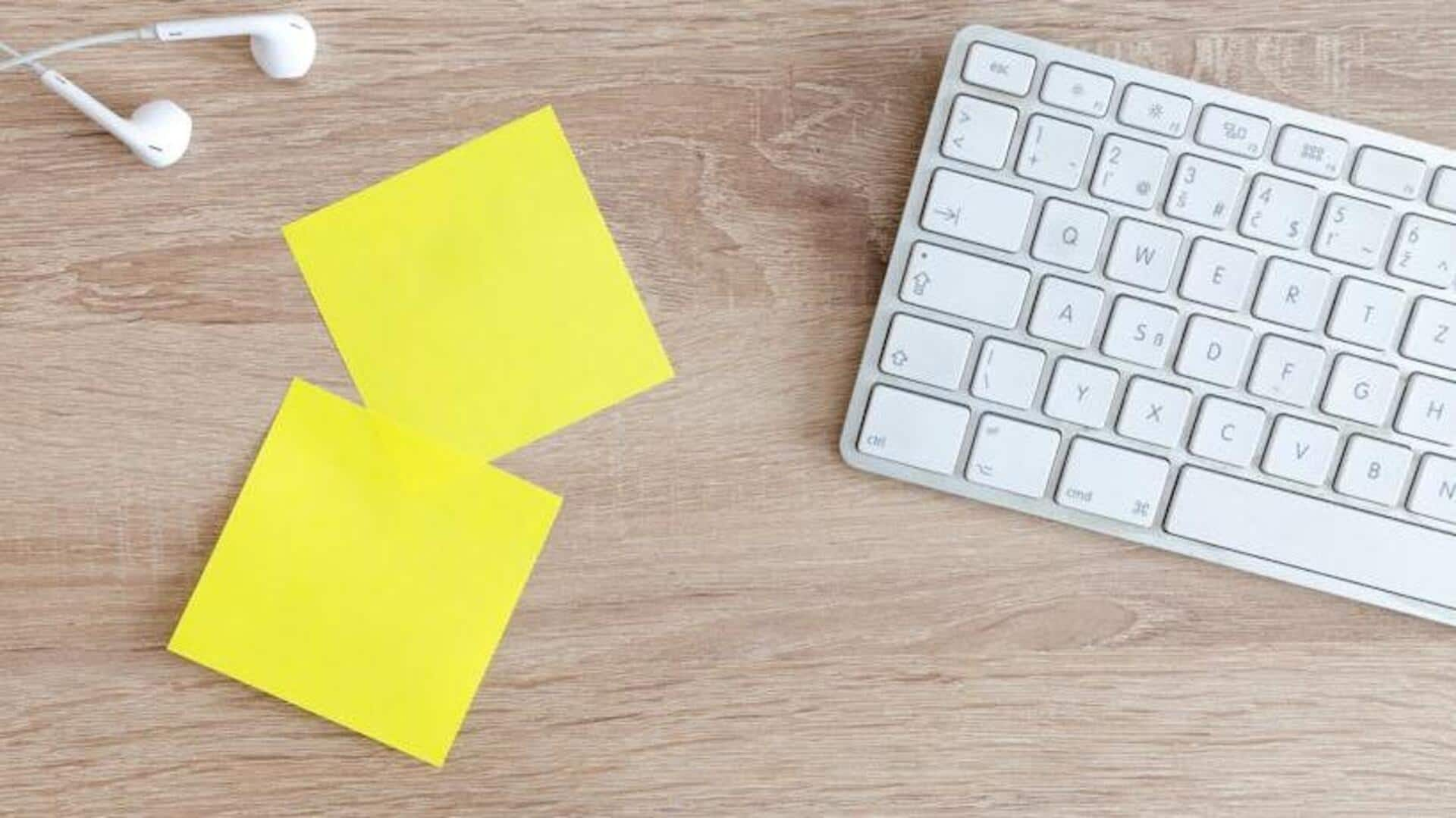
No app required: How to create smart reminders manually
What's the story
We all love smart reminders but what if we tell you that you can create them without relying on digital assistants?
Obviously, this can be a practical approach for those who prefer traditional methods or want to minimize screen time.
Using simple tools and techniques, you can easily manage your tasks and appointments.
Here's how to set up efficient yet easy reminders.
Visual cues
Use of sticky notes
Sticky notes have always been a classic for setting reminders.
Keeping them on visible spots, be it your desk or refrigerator, keeps important tasks on the top of your mind.
The paper notes serve as a constant visual reminder, making you remember deadlines and appointments all day long.
Time management
Calendar planning
Using a physical calendar is one of the best ways to organize tasks by date.
By marking important events and deadlines, you create a visual timeline that helps in planning ahead.
This way, you can ensure better time management, as you get an overview of upcoming commitments, making it easier to allocate time efficiently.
Audible reminders
Alarm clocks for timely alerts
Alarm clocks are priceless when it comes to setting reminders throughout your day.
By scheduling alarms at predetermined intervals, you can ensure no important task is forgotten.
This trick works great for daily routines, like taking medication or reaching on time for meetings.
It's a simple way to keep focus on important activities and stay on track with your day's objectives without missing a beat.
Organized tasks
Task lists with prioritization
Creating task lists with prioritization helps in managing your daily responsibilities effectively.
By listing tasks in order of importance, you focus on completing high-priority items first.
Not only does this enhance your productivity but it also reduces stress by providing a clear roadmap of what needs to be accomplished.
Flexible planning
Whiteboards for dynamic scheduling
Whiteboards also provide flexibility in scheduling. You can easily adjust your plans as needed.
By writing down your daily goals or weekly agendas on a whiteboard, you keep them visible and top-of-mind while also having the freedom to modify plans dynamically based on changing priorities or new information received during the week.